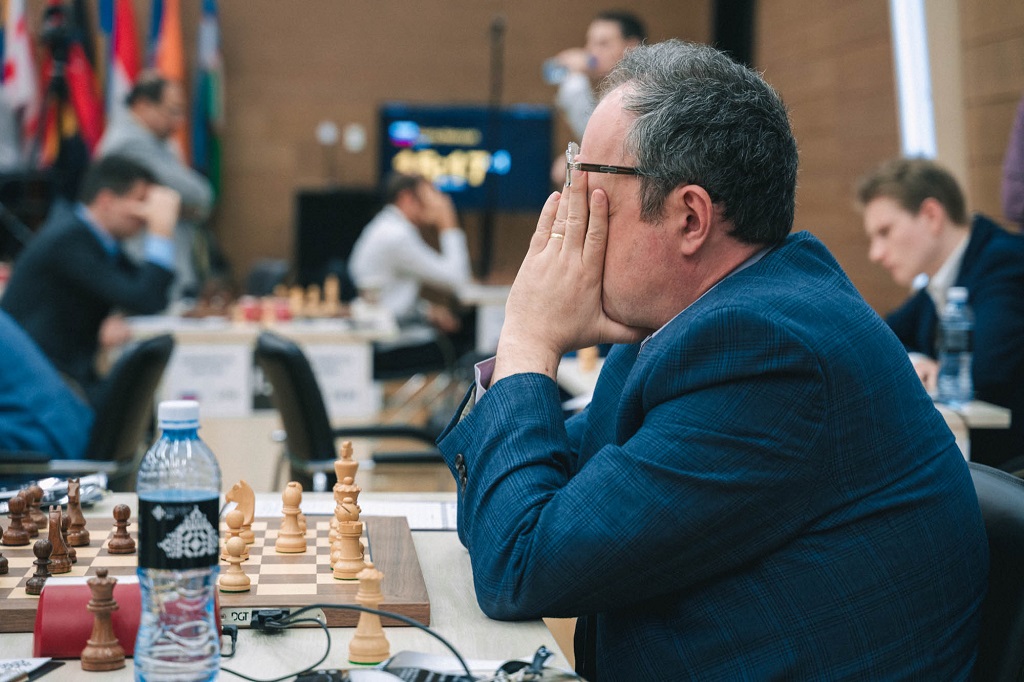


 The FIDE World Cup is taking place in Khanty-Mansiysk. It is a seven-round knock-out event for 128 players, with a total prize fund of US$ 1.6 million and a first prize of US$ 110,000. The matches consist of two classical games with a time control of 90 minutes for 40 moves plus 30 minutes for the rest of the game, with an increment of 30 seconds per move. The finals consist of four classical games. Full schedule.
The FIDE World Cup is taking place in Khanty-Mansiysk. It is a seven-round knock-out event for 128 players, with a total prize fund of US$ 1.6 million and a first prize of US$ 110,000. The matches consist of two classical games with a time control of 90 minutes for 40 moves plus 30 minutes for the rest of the game, with an increment of 30 seconds per move. The finals consist of four classical games. Full schedule.
Nine out of eleven players that had kicked off round two with a win made the most of their early lead by drawing game two and reaching the round-of-32. Eight others won after having drawn on Friday, while only Wei Yi and Eltaj Safarli tied the scores in their match-ups after having lost game one. Remarkably, Maxime Vachier-Lagrave, Sergey Karjakin and Jan-Krzysztof Duda scored 2:0 wins after having gone through the first round without needing tiebreaks.
The story of the day, though, was Hikaru Nakamura's elimination, who could not recuperate from a painful loss against Liviu-Dieter Nisipeanu. Also surprising was Xu Xiangyu's victory over Ernesto Inarkiev — no less than 116 Elo points separate the contenders' ratings.
In the meantime, the attack of the youth continues in Siberia, as Alireza Firouzja defeated Daniil Dubov in an exceptional effort to attain a place in round three and Andrey Esipenko drew a second game against Peter Svidler to reach the tiebreaks. On the other hand, the youngest of all still in contention, Nihal Sarin, had everything on hand to get a draw and a ticket to the next round, but surprisingly blundered the game away against Eltaj Safarli — the 15-year-old will play a tiebreaker round for the first time in Khanty-Mansiysk.
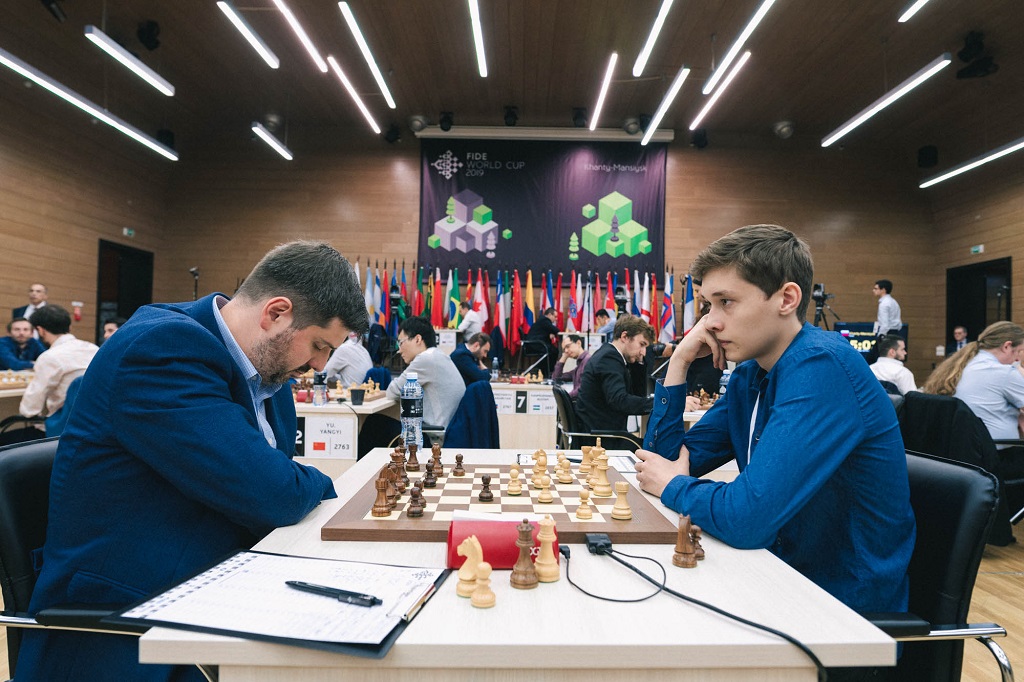
17-year-old Andrey Esipenko facing eight-time Russian champion Peter Svidler | Photo: FIDE
Hikaru Nakamura had to face a Petroff Defence in his must-win game against Liviu-Dieter Nisipeanu. As so often happens, trying to create chances out of thin air backfired, which meant the German grandmaster was actually in the driver's seat by move 20. Soon enough, Nakamura's position completely collapsed but Nisipeanu nonetheless agreed to a draw, thus securing a spot in the next round.
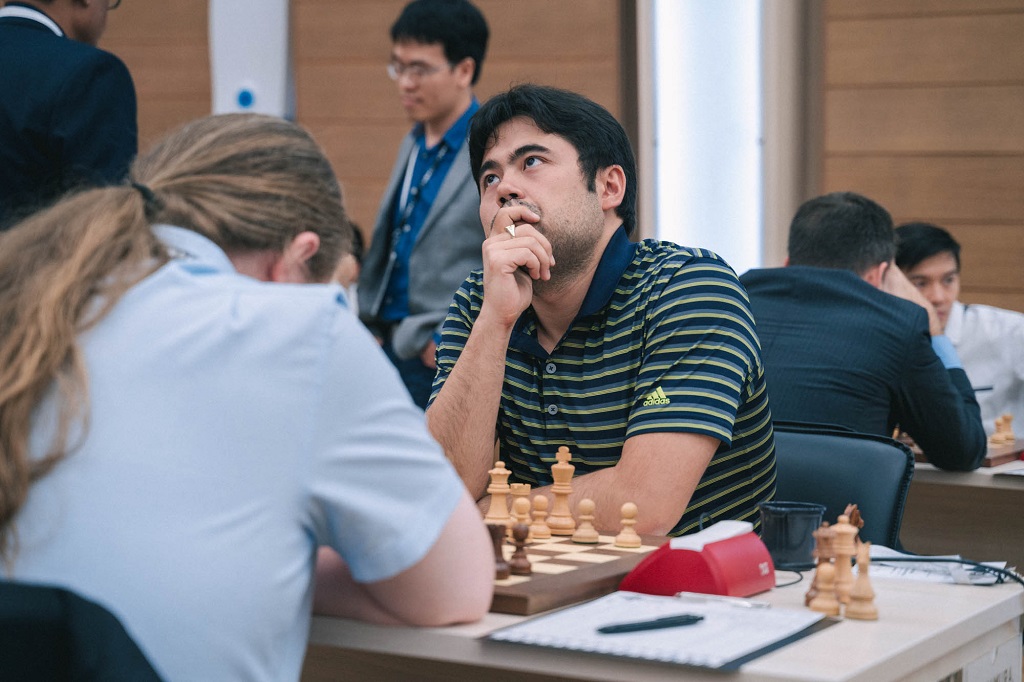
Hikaru Nakamura could not win on demand against Liviu-Dieter Nisipeanu | Photo: FIDE
Meanwhile, Xu Xiangyu (2576) had the white pieces against Ernesto Inarkiev (2693). The young Chinese played sharply in the opening, leaving his king in the centre and lifting the h-rook after having gone for an early pawn push to h4. Inarkiev did not sense the danger, and allowed Xu to execute a nice tactical shot:
White made use of his great dark-squared bishop on the a1-h8 diagonal by giving up his rook with 23.♖xg7 — after 23...♚xg7, the f6-knight is pinned. The long tactical sequence 24.♗xe4 ♞d7 25.♘e5 ♜c8 26.♘xd7 ♜xc3 27.♕g3+ ♚h8 28.♘xf6 ♛xf6 29.bxc3 left White simply a piece up. Xu Xiangyu won after 46 moves.

Thirty-two players will be left on stage after Sunday's tiebreaks | Photo: FIDE
Alireza Firouzja was actually the rating favourite against world rapid champion Daniil Dubov —albeit by merely three points — and got the ticket to the next round without needing tiebreaks after winning game two in 68 moves. Firouzja was the one pushing out of the opening, but in the meantime he had left his knight rather short of squares on enemy camp:
The Iranian could have gone for a repetition with 37.♘a6 ♜a7 38.♘b8, but instead found 37.exd6 with little time left on his clock. Dubov took the knight immediately, 37...♜xb8, and Firouzja went on to show the idea behind the sacrifice: 38.♖e1 ♚f8 39.♖e7 ♜d8 40.a6 ♜xd6 41.a7 and the a-pawn eventually cost Black the rook.
Dubov fought on but the result of the rook versus bishop endgame was never in doubt. Firouzja will face the winner of Ding Liren vs Sergei Movsesian starting Monday.
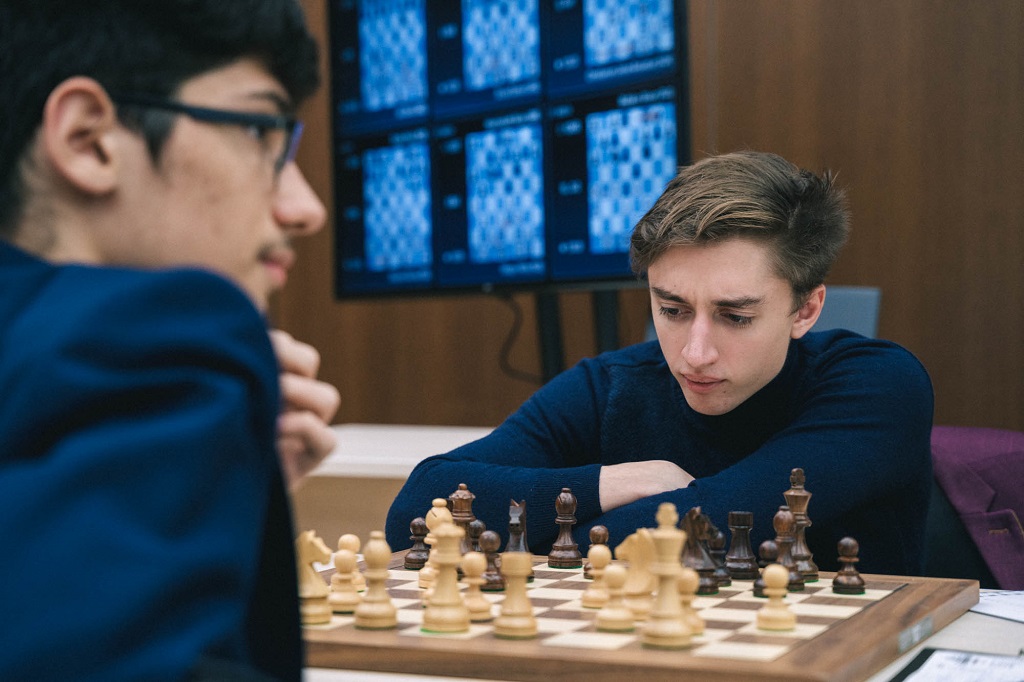
Daniil Dubov was knocked out by 16-year-old Alireza Firouzja | Photo: FIDE
Things went differently for Nihal Sarin. After winning his first three games of the event, he only needed a draw to knock out Eltaj Safarli. The 15-year-old from Thrissur got a comfortable position with Black — furthermore, he got the upper hand when his Azeri opponent faltered on move 30:
There is nothing preventing Black from capturing on f2 with 30...♝xf2 here. Nihal took the pawn almost immediately, but after 31.♘d2 ♛g4 32.♖xb7 he completely hallucinated with 32...♜g6:
There is no winning attack for Black after 33.♖xf2. White is simply up a piece — Nihal resigned four moves later. Fortunately for the Indian, young minds tend to recover rather quickly from these blows.
IM Sagar Shah analyzes Nihal Sarin's exquisite play to get a winning position and then the blunder to simply lose it in one move. See full report on ChessBase India.
Safarli was not the only player that bounced back on Saturday, as Wei Yi showed his sharp brand of chess to defeat David Anton with the black pieces and take the match to rapid (and blitz, if necessary) play-offs. The Chinese prodigy gave up a pawn early in the game, but he was clearly the one with the initiative against Anton's restricted pieces. Wei Yi pushed his central pawns when he felt his army was in place to attack:
There followed 37...f4 38.♘d5 e3 and Anton found nothing better than 39.♖xd4. Wei Yi simplified into an endgame an exchange up and converted his advantage into a 53-move win.
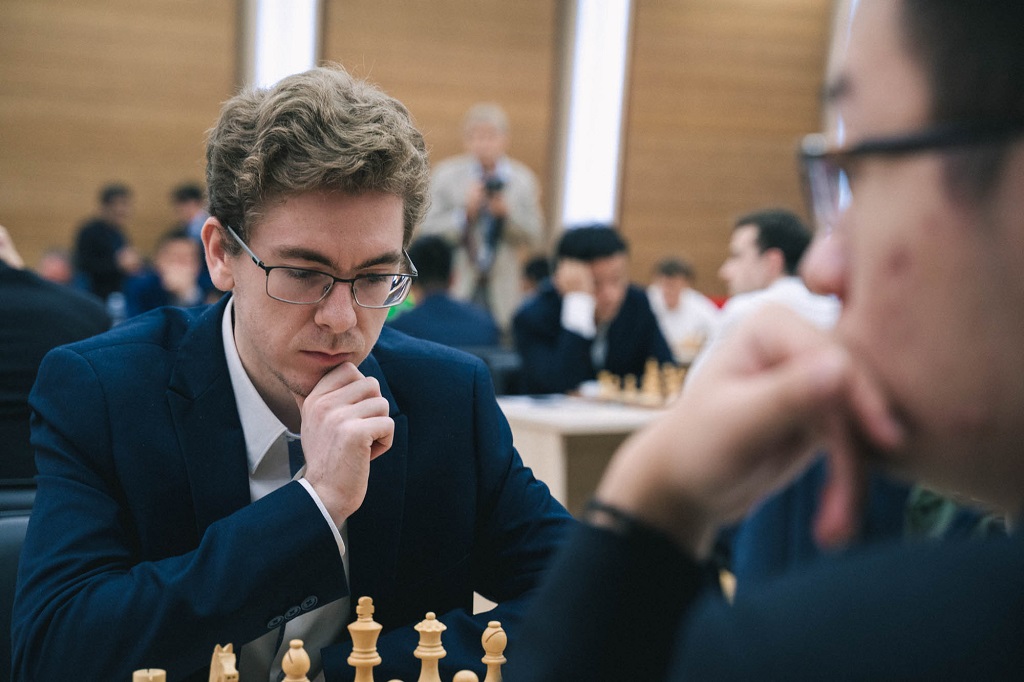
Spaniard grandmaster David Anton | Photo: FIDE
Rating favourites Ding Liren and Anish Giri will play tiebreaker rounds against Sergei Movsesian and Evgeniy Najer, while the next five in the ratings list are already in round three: Maxime Vachier-Lagrave, Wesley So, Ian Nepomniachtchi, Levon Aronian and Shakhriyar Mamedyarov will have a rest day before round three. The defending champion was interviewed after knocking out Parham Maghsoodloo and, as per usual, he had many interesting quotes in store:
IM Lawrence Trent recaps the action of the day
Commentary by GMs Evgeny Miroshnichenko and Alex Yermolinsky